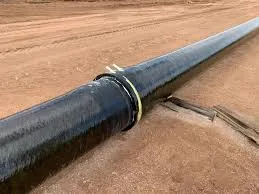
-
 Afrikaans
Afrikaans -
 Albanian
Albanian -
 Amharic
Amharic -
 Arabic
Arabic -
 Armenian
Armenian -
 Azerbaijani
Azerbaijani -
 Basque
Basque -
 Belarusian
Belarusian -
 Bengali
Bengali -
 Bosnian
Bosnian -
 Bulgarian
Bulgarian -
 Catalan
Catalan -
 Cebuano
Cebuano -
 China
China -
 China (Taiwan)
China (Taiwan) -
 Corsican
Corsican -
 Croatian
Croatian -
 Czech
Czech -
 Danish
Danish -
 Dutch
Dutch -
 English
English -
 Esperanto
Esperanto -
 Estonian
Estonian -
 Finnish
Finnish -
 French
French -
 Frisian
Frisian -
 Galician
Galician -
 Georgian
Georgian -
 German
German -
 Greek
Greek -
 Gujarati
Gujarati -
 Haitian Creole
Haitian Creole -
 hausa
hausa -
 hawaiian
hawaiian -
 Hebrew
Hebrew -
 Hindi
Hindi -
 Miao
Miao -
 Hungarian
Hungarian -
 Icelandic
Icelandic -
 igbo
igbo -
 Indonesian
Indonesian -
 irish
irish -
 Italian
Italian -
 Japanese
Japanese -
 Javanese
Javanese -
 Kannada
Kannada -
 kazakh
kazakh -
 Khmer
Khmer -
 Rwandese
Rwandese -
 Korean
Korean -
 Kurdish
Kurdish -
 Kyrgyz
Kyrgyz -
 Lao
Lao -
 Latin
Latin -
 Latvian
Latvian -
 Lithuanian
Lithuanian -
 Luxembourgish
Luxembourgish -
 Macedonian
Macedonian -
 Malgashi
Malgashi -
 Malay
Malay -
 Malayalam
Malayalam -
 Maltese
Maltese -
 Maori
Maori -
 Marathi
Marathi -
 Mongolian
Mongolian -
 Myanmar
Myanmar -
 Nepali
Nepali -
 Norwegian
Norwegian -
 Norwegian
Norwegian -
 Occitan
Occitan -
 Pashto
Pashto -
 Persian
Persian -
 Polish
Polish -
 Portuguese
Portuguese -
 Punjabi
Punjabi -
 Romanian
Romanian -
 Russian
Russian -
 Samoan
Samoan -
 Scottish Gaelic
Scottish Gaelic -
 Serbian
Serbian -
 Sesotho
Sesotho -
 Shona
Shona -
 Sindhi
Sindhi -
 Sinhala
Sinhala -
 Slovak
Slovak -
 Slovenian
Slovenian -
 Somali
Somali -
 Spanish
Spanish -
 Sundanese
Sundanese -
 Swahili
Swahili -
 Swedish
Swedish -
 Tagalog
Tagalog -
 Tajik
Tajik -
 Tamil
Tamil -
 Tatar
Tatar -
 Telugu
Telugu -
 Thai
Thai -
 Turkish
Turkish -
 Turkmen
Turkmen -
 Ukrainian
Ukrainian -
 Urdu
Urdu -
 Uighur
Uighur -
 Uzbek
Uzbek -
 Vietnamese
Vietnamese -
 Welsh
Welsh -
 Bantu
Bantu -
 Yiddish
Yiddish -
 Yoruba
Yoruba -
 Zulu
Zulu
fiberglass car
The Rise of Fiberglass Cars A Revolution in Automotive Design
In the world of automotive engineering, the introduction of fiberglass in car manufacturing marked a revolutionary shift in design, weight, and performance. Fiberglass, a composite material made of plastic reinforced by glass fibers, has been embraced for its strength, durability, and lightweight properties, making it an ideal choice for car bodies. The history of fiberglass cars dates back to the mid-20th century when manufacturers began to explore new materials to enhance vehicle performance and aesthetics.
One of the earliest and most famous fiberglass cars was the Chevrolet Corvette, introduced in 1953. The Corvette was not only a bold statement in design but also a testament to the potential of fiberglass. By utilizing this innovative material, Chevrolet managed to create a vehicle that was lighter than its steel counterparts, allowing for improved speed and fuel efficiency. The Corvette set the stage for other manufacturers to adopt fiberglass technology, paving the way for a new era in automotive design.
The benefits of using fiberglass in car production are numerous. Firstly, the lightweight nature of fiberglass allows for increased fuel efficiency, as less energy is required to move the vehicle. This has become increasingly important in an era where environmental concerns are at the forefront of automotive design. Additionally, fiberglass is resistant to corrosion and rust, which contributes to the longevity of the vehicle. This durability means that vehicles built with fiberglass can withstand the elements better than traditional metal cars, making them a smart investment for consumers.
fiberglass car

Moreover, the versatility of fiberglass allows for greater design freedom. It can be molded into intricate shapes and can be colored easily, providing manufacturers with the ability to create aesthetically pleasing vehicles that stand out in a crowded marketplace. From classic sports cars to modern electric vehicles, fiberglass has been employed in a wide range of designs that showcase its adaptability.
However, the journey of fiberglass cars has not been without challenges. Some critics argue that the production process of fiberglass is less environmentally friendly than traditional methods. Although advancements have been made, such as the development of greener resins and recycling techniques, the industry continues to seek sustainable solutions that balance performance and environmental impact.
As we look to the future, the resurgence of interest in electric vehicles presents new opportunities for fiberglass. The lightweight characteristics of fiberglass can greatly benefit electric cars, where reducing weight is key to maximizing battery efficiency and range. Several manufacturers are currently experimenting with fiberglass composites to create innovative designs that marry style with sustainability.
In conclusion, the evolution of fiberglass cars reflects broader trends in the automotive industry focused on improving performance, sustainability, and design. As technology continues to advance, fiberglass is likely to remain a vital component of car manufacturing, further establishing its place in the future of transportation. The journey from the iconic Corvette to the next generation of electric vehicles epitomizes the enduring appeal and functionality of fiberglass, ensuring that it will continue to play a significant role in shaping the automotive landscape for years to come.









